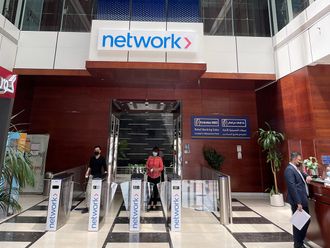Washington: For Federal Reserve Chairman Jerome Powell, the days of straightforward policy meetings are numbered.
An interest-rate increase at the December 18-19 gathering of the US central bank is priced at around 70 per cent odds and the case for a move, backed up by comments from Powell and his colleagues this week, is supported by strong economic growth and ultra-low unemployment.
But a hike next month would also lift the top Fed’s benchmark target rate to 2.5 per cent — the bottom of officials’ range of estimates for a neutral policy setting that neither spurs nor slows growth. Going forward, officials will have to decide how much higher to go. Investors are reading their recent remarks as backing off from a policy on autopilot to a strategy that could see them pause in 2019 and wait for feedback from the economy.
“There is this narrative that the Fed is going to keep hiking until something breaks,” said Neil Dutta, an economist at Renaissance Macro Research. “I don’t buy that. Global growth weakness has caught their attention.”
Fed officials in September estimated a range of 2.5 per cent to 3.5 per cent for a neutral policy rate. The Fed’s benchmark policy rate is currently 2 per cent to 2.25 per cent.
Subsequent moves, as Powell’s remarks about manoeuvring in the dark made clear, are highly dependent on what they bump into and what the shape of things they encounter tell them about the outlook.
Officials including Fed vice-chairman Richard Clarida and Chicago Fed president Charles Evans are not comfortable maintaining a stimulative rate at a time when the labour market is beyond their estimate of full employment and inflation is at their 2 per cent target.
The Fed’s dot-plot of quarterly interest rate forecasts, which will be updated next month, showed a fourth 2018 rate hike pencilled in for December and three more moves next year.
“Being at neutral would make sense,” Clarida told CNBC on Friday. Evans, speaking later in the day, used almost identical language at an event in Chicago. “It makes a lot of sense to at least get back to neutral,” he said.
Despite their desire to keep moving, there are plenty of signs that their rate increases are starting to have an impact. Housing markets have slowed, financial market volatility has increased, and credit spreads have widened as investors reassess the outlook for growth and profits. What’s more, estimates for global growth are slowing.
“The global economy is something” the Fed has to pay attention to, Clarida said, adding that there “is some evidence that it’s slowing.”










